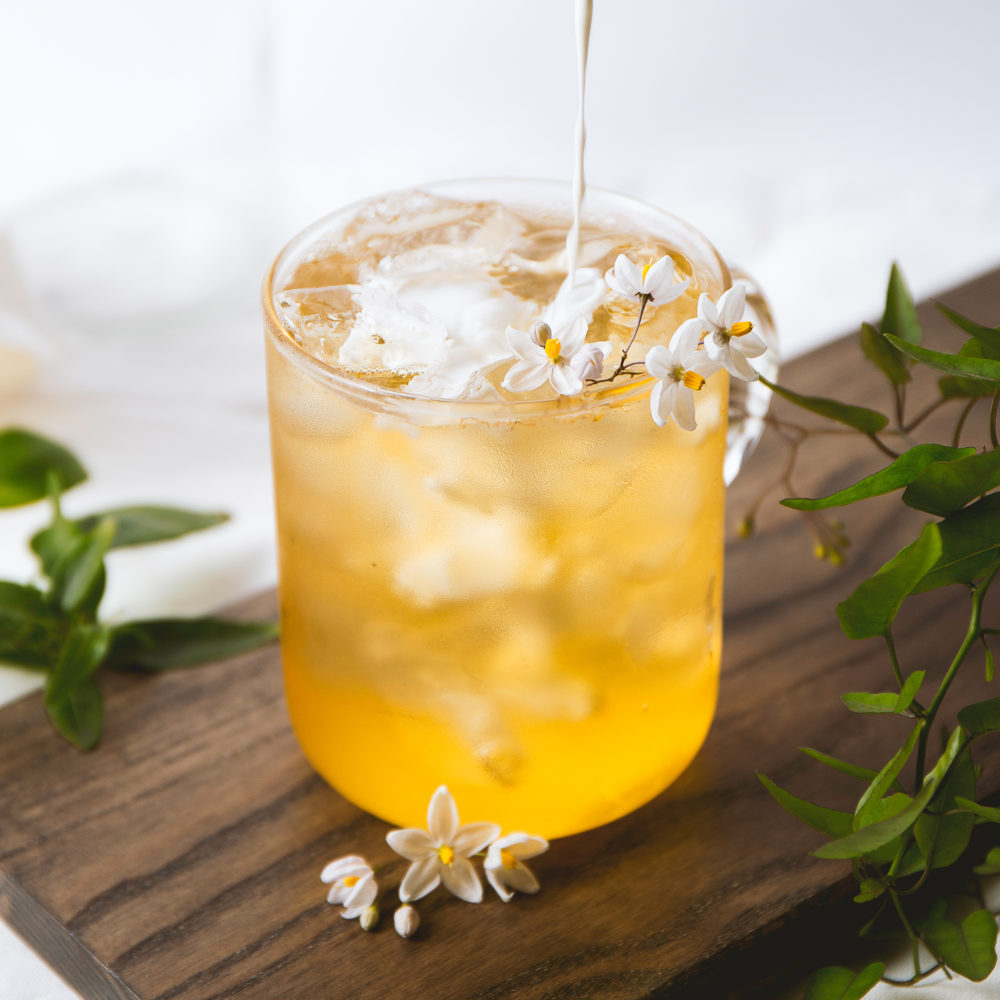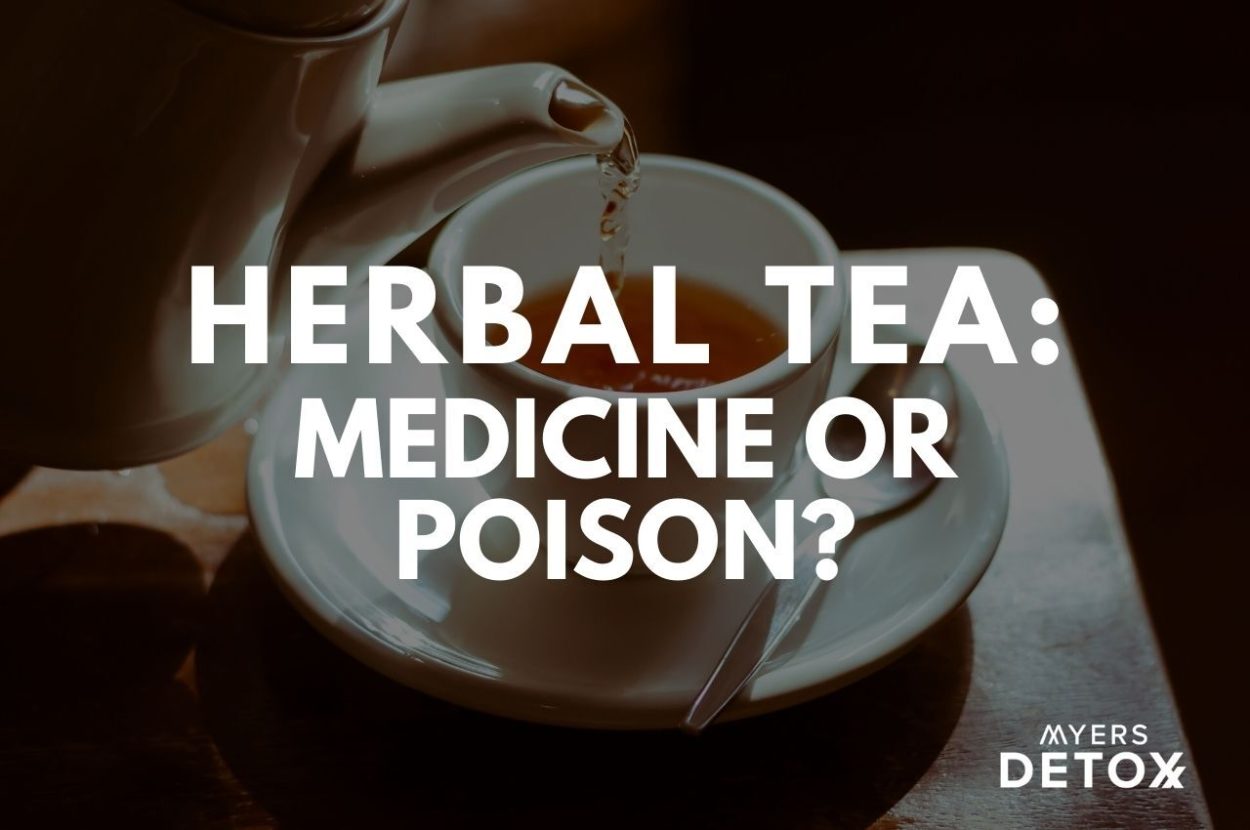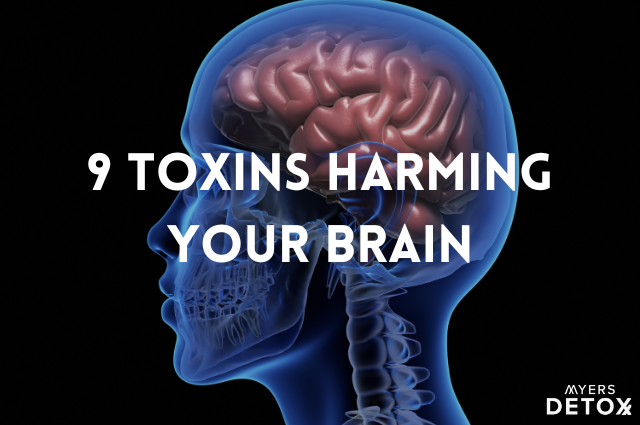Sipping on herbal tea is a beautiful way to wind down at the end of the day, and many herbal teas come packed with health benefits. For thousands of years, cultures worldwide have used tea infusions to enhance health and create a sense of balance and calm.
However, with all the benefits of teas, there is one significant downside that many people don’t know about — many herbal teas are highly contaminated with heavy metals and pesticides.
In this article, you’ll learn:
- Research shows that toxins coming from heavy metals, pesticides and mycotoxins are polluting our tea supply
- The toxins that may be lurking in tea bags
- Which teas to look out for – which herbal teas are the most contaminated
- How to protect yourself from the toxic burden of contaminated herbal teas
- How to choose a uncontaminated herbal tea
Toxins In Your Favorite Herbal Teas
Although that sachet of tea may look innocent enough, the potential for contamination is likely much higher than you would imagine. Research shows that toxins coming from heavy metals, pesticides and mycotoxins are polluting our tea supply and may be contributing to serious health concerns. And to make matters worse, that little tea bag or sachet itself may be a source of toxins all on its own.
Heavy Metals
Heavy metals are one of the most significant sources of toxic contamination in herbal teas. When the herbal ingredients that make up your favorite teas are grown in soil contaminated with heavy metals, they readily soak up these toxic compounds. They have an affinity for uptaking antioxidants and minerals from the soil, but have the same affinity for drawing toxins from the soil.
While any plant can become contaminated with heavy metals, research shows that tea can have high levels because these plants may not be harvested until they’re aged, meaning they have more time to accumulate metals[1].
Exposure to heavy metals can damage organs, including the brain, lungs, kidneys, liver, and heart. Over time, exposure to these metals can result in physical, neurological, and muscular degeneration, imitating diseases like dementia and Parkinson’s disease[2].
Unsafe levels of the heavy metals arsenic, cadmium, aluminum, lead, mercury and more have been found in a variety of herbal teas[3][4].
Pesticides
Pesticides are designed to kill pests that attack plants, and in turn, help to improve the yield and production rate of many crops. Due to the widespread use of pesticides, exposure to these chemicals is almost unavoidable these days in nonorganic teas.
Unfortunately, although they may do wonders for crop production, the impact on human health is highly concerning. Research shows that pesticides target the endocrine and nervous system and may result in conditions like depression, anxiety, neurological disease, infertility, thyroid dysfunction, and diabetes — to name a few[5][6].
Unfortunately, unless your tea is labeled organic, you can be quite sure that it’s been sprayed with pesticides. And the longer you brew your tea, the more at risk you are for pesticide toxicity[7].
As always, I recommend drinking only organic teas (and food).
Mycotoxins
Mycotoxins are naturally occurring toxins produced by mold, often under warm or humid conditions. The health impacts of mycotoxins are wide-ranging and can be harmful to your immune system and overall health.
Aflatoxin is one of the most well-studied mycotoxins and has been identified in several strains of herbal tea. This harmful compound is toxic to your DNA and may cause liver cancer[8][9].
Ochratoxin A is another common mycotoxin found in herbal teas. Ochratoxin A is known to cause kidney damage, in addition to impacting the immune system and potentially harming fetal development[9][10].
Mycotoxins can occur in tea at any stage of its harvesting. Improper cultivation, drying, processing, transportation, and storage conditions may result in moisture retention that leads to the growth of mold and increases the risk of mycotoxins[47].
Toxins in Tea Bags
The tea bags that hold your tea present their own issues as well. Many of the popular brands you may consume use tea bags that are coated with toxic substances like dioxin or epichlorohydrin, which help the bag stay intact when submerged in water[15].
Other tea bags may contain plastics like PVC or nylon, including chemical additives like phthalates or heavy metals[16].
And paper bags are no better, with many of these tea bags being doused in bleach to whiten them.
I prefer to steep loose teas in glass or a stainless steel cage. But if you like tea bags, the only types I can recommend are ones that are completely biodegradable, plastic-free, and organic. The best option I’ve found are tea bags made of silk fibers.
Potential Pollutants In 7 Of The Most Popular Herbal Teas
#1 Chamomile
Nothing compares to the calming scent of a steaming cup of chamomile tea. Chamomile is considered a nervine plant due to the calming impact it has on your nervous system. As a nervine, chamomile has been shown to support sleep and mental health conditions like generalized anxiety disorder[17].
Unfortunately, along with its calming properties, chamomile tea may also come with heavy metals like lead, which is poisonous to your organs[14][18]. And of course if not organic, chamomile tea can contain pesticides.
#2 Mint
Mint tea is popular for calming digestive upset like gas and bloating, and research shows that even the scent of mint tea may awaken your senses and give you a boost in cognitive function[19][20].
Furthermore, many women swear by peppermint tea as a way to calm menstrual cramps, with some research showing that the impact can be just as potent as taking NSAIDs[21].
However, that refreshing cup of mint tea may also come packed with heavy metals like aluminum, copper and cadmium[14][18]. Additionally, if it’s not organic, mint teas can contain pesticides.
#3 Ginger
Ginger tea is another well-known remedy for gastrointestinal issues. Specifically, ginger can calm an upset stomach by acting on the muscles that cause stomach contractions, slowing them down and creating an environment that supports digestion.
In fact, ginger tea is one of the most popular remedies for morning sickness in pregnant women, as it helps to calm nausea and prevent vomiting[22]. In addition, research also shows that ginger tea may support people with diabetes in managing their blood sugar[23].
With that being said, one of the biggest concerns around ginger tea is the potential mycotoxins. Depending on how the ginger is grown, and the tea is produced, ginger may be contaminated with either aflatoxin or another mycotoxin known as citrinin. Citrinin, much like aflatoxin, is an incredibly harmful mycotoxin that can damage your liver and kidneys and may be carcinogenic[24][25][26].
In addition, research also shows that ginger is susceptible to mercury toxicity — a harmful heavy metal that can attack your nervous and immune system and have body-wide toxic effects[27][28].
Since ginger is grown in the ground, it is of particular concern for pesticides as well. Even if the ginger itself isn’t treated with pesticides, if they have seeped into the soil it’s grown in it could potentially become contaminated.
#4 Hibiscus
Hibiscus tea is packed with antioxidants that help your body fight oxidative stress, and some research shows it may even help to promote weight loss, especially abdominal fat[29][30].
Hibiscus tea lovers get the best of both worlds as this herbal concoction tastes just as good over ice as it does in a warm mug.
The downside, however, is that hibiscus tea is often contaminated with heavy metals. Although several heavy metals have been identified in hibiscus tea samples (including manganese, lead, and nickel), aluminum is the most concerning[31].
Aluminum toxicity is associated with a myriad of health concerns, including genotoxicity, immune alterations, inflammation, blood clots, ischemic stroke, and much more[32].
#5 Rooibos
Rooibos tea is popular among those who love black tea but are trying to cut back on caffeine. It’s free of anti-nutrients like tannins and oxalates, making it an excellent choice when you want to maximize your nutrient absorption while also enjoying a lovely cup of dark tea.
Research shows that rooibos’ antioxidants may support heart health by lowering blood pressure and improving blood lipids[33][34]. Furthermore, some research shows that the antioxidants quercetin and luteolin found in rooibos may inhibit cancer cell growth[35].
Unfortunately, studies show that rooibos may also be a potential carrier of aflatoxin, a dangerous mycotoxin[37][38].
And like most other teas, if your brand doesn’t explicitly state that it’s organic, it’s likely sprayed with dangerous pesticides.
#6 Turmeric
Turmeric tea has become increasingly popular recently as research continues to support its role in calming inflammation. Curcumin, the primary bioactive compound in turmeric, has even been put to the test against anti-inflammatory drugs, passing with flying colors[43].
What’s more, it appears that curcumin boosts something called Brain-Derived Neurotrophic Factor (BDNF), which plays a crucial role in neurological health[44].
So, what could be wrong with a little golden latte at the end of the day?
Research shows that turmeric may be a source of lead exposure. Lead is a heavy metal that’s associated with a range of health concerns, including anemia, kidney damage, and neurological damage[45][46].
What’s more, turmeric may also be a breeding ground for the harmful mycotoxin, aflatoxin[26].
#7 Dandelion Tea
Dandelion is a powerful detoxifying plant, and has been used in folk medicine for centuries as a liver tonic herb. Research shows that the polysaccharides in dandelion protect your liver from damage by enhancing the antioxidant activity in this vital organ[48].
Dandelion also acts as a natural diuretic, assisting the removal of wastes from your body by supporting kidney function[49].
Although dandelion grows freely and is actually considered a weed in many circles, when cultivated as a tea it may be sprayed with pesticides to protect the crop.
In addition, dandelion readily picks up nutrients and toxins from the soil in which it’s grown. This is wonderful if the soil is packed with vitamins, minerals, and antioxidants. However, if the soil is contaminated with heavy metals and pesticides, dandelion becomes a perfect conduit for these harmful compounds. Interestingly, it appears that the above-ground parts of the plant are most saturated with toxins, which, unfortunately, is the part that’s used for tea. For this reason, always look for the organic label on dandelion tea[50].
#8 Yerba Mate Tea
Yerba mate is rich in antioxidants and other phytonutrients like xanthines, saponins, and polyphenols. It contains caffeine, which can give you a nice energy-boost, but doesn’t make you crash like coffee often does. Some research even shows that drinking yerba mate may increase energy expenditure and fat burning during exercise[51][52].
The downside to yerba mate, however, is the potential contamination with heavy metals like arsenic, cadmium, and lead, along with pesticides. Due soil contamination by fertilizers, coal, vehicle emissions, mining, refining, and incineration of urban and industrial waste the ground in which yerba mate is grown may be dense with toxic compounds[53][54].
Luckily, there are brands that test for heavy metals and provide an organic certification for yerba mate, so you can always find high-quality options.
#9 Lemon Balm Tea
One of the most well-known benefits of lemon balm tea is its ability to relax your mind and ease your nerves. As a mild sedative, lemon balm can mitigate the effects of stress, and offers a natural solution to everyday worries and anxieties[55].
In addition, due to its beneficial impact on brain health, research shows that lemon balm may enhance cognitive function[56].
Unfortunately, lemon balm is often cultivated in soils with significant amounts of heavy metals, especially lead. The bioaccumulation of heavy metals in lemon balm is a real concern, and therefore you should always choose brands that test for heavy metals when looking for lemon balm tea[57][58].
How To Enjoy Herbal Tea Safely
At this point, you may be wondering if it’s time to kick the tea habit altogether. While many tea brands market themselves as non-GMO and organic, very few can back up their claims of purity with lab-tested quality.
Luckily, I’ve come across one company that not only screens for pesticides but also ensures that their tea is free of mold, mycotoxins, and heavy metals. Incredible!! They go the extra mile to ensure their teas are safe.
 Pique Tea is crafted by a Traditional Chinese Medicine expert, with all of the ingredients thoughtfully sourced for quality and nutritional content. In fact, Pique Tea sources their tea globally, from Egypt to China to Northern Europe, only the most nutrient-dense high-quality ingredients get incorporated into their products.
Pique Tea is crafted by a Traditional Chinese Medicine expert, with all of the ingredients thoughtfully sourced for quality and nutritional content. In fact, Pique Tea sources their tea globally, from Egypt to China to Northern Europe, only the most nutrient-dense high-quality ingredients get incorporated into their products.
What makes Pique Tea even more unique is their patented cold extraction technology which allows them to extract the bioactive contents in the tea. As a result, their tea is rich in bioavailable antioxidants and phytonutrients that support immunity, energy, digestion, and more. The teas are in powdered form that you simply hydrate with cold or hot water.
Not only that, but they are super easy to make, produce less mess and cleanup since they are instant – and they taste absolutely incredible. I am a bit of a tea snob and I was very impressed with the taste of all their teas I have tried.
Special Offer for Myers Detox Readers!
To save 5% sitewide on your first order of Pique Teas, simply click here. Your coupon code – MYERS – will be automatically applied at checkout! Happy sipping!
Takeaway
Many people turn to herbal tea to kick their caffeine or coffee habit, or they use it as a way to wind down at night instead of drinking a beer or glass of wine. Unfortunately, like all foods, this seemingly innocent beverage has its own downfalls — pesticides, mycotoxins and heavy metals.
Although many herbal teas come with an array of nutrients that can support your health, if you’re consuming those phytochemicals along with a cocktail of toxins, the net result won’t do much to promote a healthy body.
Luckily you can find some companies that are doing their part to bring healthy, clean, and nutrient-dense teas to their consumers. From the research I’ve done, nothing compares to the quality of Pique Tea. But if you want to do your own research, be sure that the tea you purchase has been tested for pesticides, mycotoxins, and heavy metals.
To learn more about the environmental contaminants that may be lurking in coffee and caffeinated teas, I encourage you to check out this article. It not only goes into depth on the types of metals you may be exposed to with caffeinated teas, it also examines coffee and its contaminants.
As this article has hopefully shown, it’s as important as ever to stay vigilant about our health – right down to your morning (or afternoon!) caffeine fix.










